Whitepaper
Think… Megawatts & Megatrends
The energy transition meets the built environment
Inspire a better world through influence and design




We acknowledge the Traditional Custodians as the first engineers and designers of the lands on which we live, gather and work.
We pay our respect to the Elders past and present.
Artwork: Created by Timothy Buckley, a proud Mununjali Man, this artwork titled ‘Thrive’ was commissioned by ADP Consulting, as a representation of our reconciliation journey.
Think… Megawatts & Megatrends
It may seem almost unbelievable, but building owners can cut electricity bills, reduce emissions and minimise the cost of electricity infrastructure –all without a large upfront capital investment.
While this energy transition occurs, several other megatrends are underway in parallel – and the effects of these megatrends must be predicted now to design the precincts and buildings of the future.
This white paper outlines the basic theory and processes that building owners can follow to make this transformation. When building owners get this right, more renewables can be integrated into our energy grid, accelerating decarbonisation and helping to mitigate climate change.
The key is to connect the dots between our electricity grid, the electricity market, and the building controls that already exist.
The world has begun an energy transition on a scale unseen since the Industrial Revolution. As this unfolds, wholesale energy prices have become highly volatile. On any given day, energy prices can be negative at midday and then skyrocket in the late afternoon.
By leveraging existing building controls, analytics platforms and grid monitoring and prediction tools, we can achieve substantial savings. These savings should be shared between energy retailers and building owners.
digital demands and AI Technology and Internet of Things

and carbon reporting Climate change Our power grid and buildings are being affected by megatrends
Power grid 101
Our energy grid needs to evolve. Australia’s fleet of ageing coal-fired power stations are nearing the end of their operational life.
These facilities face increasing maintenance costs and declining efficiency, requiring substantial investment in upgrades, irrespective of climate change. The push for cleaner, renewable energy has simply accelerated a transition that was already necessary.
But the switch from fossil fuels to renewables is not without its challenges.
For power grids to work, they need power generation to match energy usage. When a building’s equipment is in use, corresponding energy generation is required – whether that is solar, wind, or by burning fossil fuels. This generation then flows through the transmission and distribution networks to reach energy consumers.
4
Talkin' 'bout our generation
Australia’s energy market
Energy consumers receive their energy through the distribution network, but they are charged by retailers. Retailers have the role of buying energy from the volatile and risky wholesale market and selling it on to consumers at predictable rates.
The wholesale market updates on a five-minute cycle and can be affected by numerous factors beyond just demand: natural disasters, generator and transmission issues, and sudden weather changes among them.



Predictable
Lower
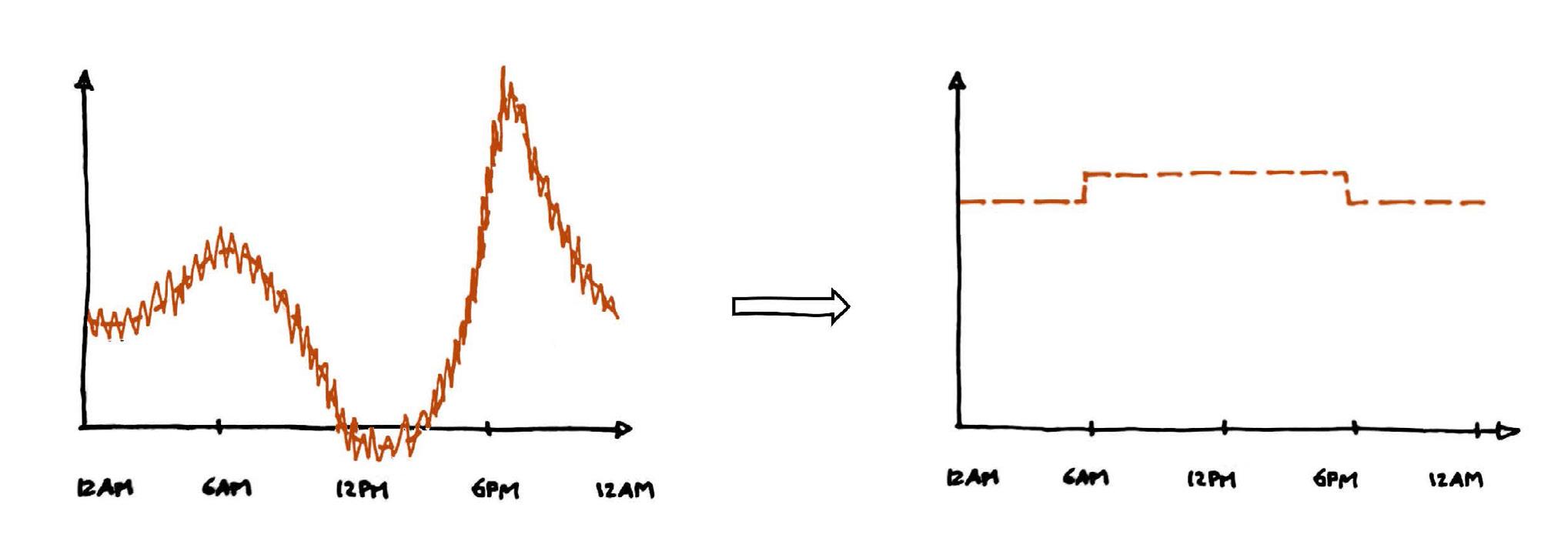
Start, ramp up, ramp down, stop
“If you use your dishwasher at night, it’s a coal-powered dishwasher. Use it during the day and it is a solarpowered dishwasher. We need to reward that.”
Craig Roussac, Co-founder and Chief Executive Officer, Buildings Alive
Matching electricity supply with demand is less complex with consistent power generation from our coal and gas power plants. Solar and wind are far more variable. As the wind drops or the sun sets, other traditional power generation systems need to be turned on rapidly to match the demand. This sudden ramp-up is a shock to the system and requires expensive controls, protection devices, poles and wires to manage it at generation, transmission and distribution levels.
When supply fails to respond to extreme changes in demand, ‘brownouts’ can occur. Unlike a blackout, the power stays on during a brownout; however its quality is significantly reduced which can cause damage to electrical and electronic devices.
The wholesale energy price can skyrocket during these transitions. Worst of all, when wholesale power costs do rise, traditional power generators often earn big dollars, as they are able to supply when the renewables can’t.
Conversely, the cheapest and lowest-carbon energy is produced in the daytime when the sun is shining.
Therefore, we need our buildings to use energy when the sun is shining, and to avoid using energy during our daily flip-flops between renewable and non-renewable energy generation.
If we do this, we can save on expensive infrastructure, encourage investment in solar and lower the energy prices for consumers. It’s a win-win-win.
Power shifts & changing currents
This graph shows a typical daily generation profile of a transitioning electricity grid. Generation profiles can be affected by the seasons, weather patterns and building demand. High price volatility is expected to continue as our grid evolves. As coal-fired generators retire, gas is eliminated from buildings, and more electric vehicles are charged, demand patterns will shift. Climate change will further increase temperatures and the demand for airconditioning, while extreme weather events are likely to cause damage to energy infrastructure.
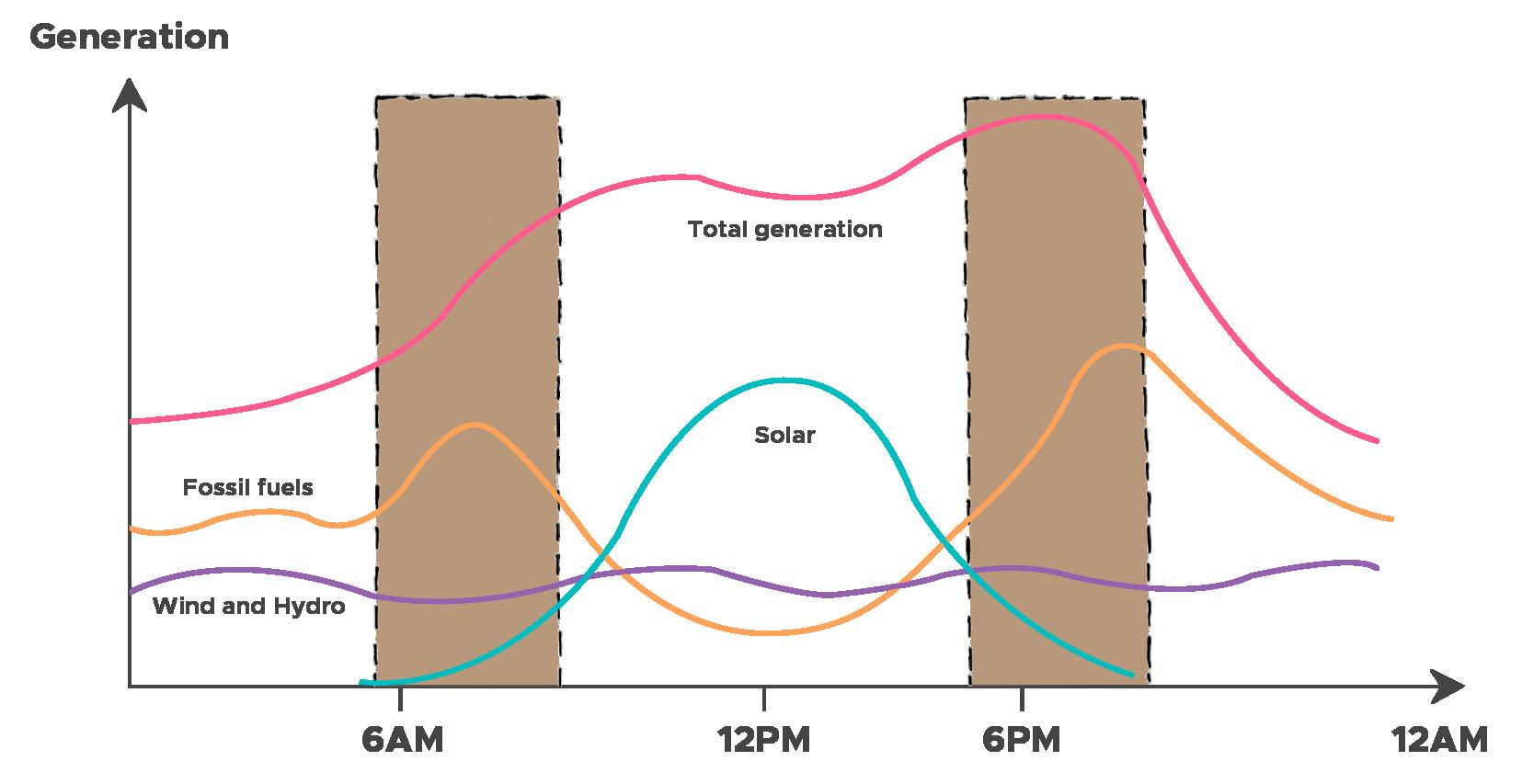


Peaks & troughs: Riding the waves of energy demand
“Energy consumption is like nutrition. It’s not just about the calories consumed –it’s also about the quality of those calories and when you consume them.”
Alex Sear, Director / Building Revitalisation Lead, ADP Consulting
% Building load over a day
High carbon, high $/kWh (requires energy storage to avoid)
High carbon, high $/kWh (either shift the load to earlier or tackle with storage)
To recap: the grid ramps up and down to meet energy demand, which varies across buildings depending on their type, use, equipment and operational patterns.
But wouldn’t it be great if we could shift nonessential energy use to the times when the grid was the cleanest and the cheapest, and reduce demand during times of high energy prices and carbon intensity?
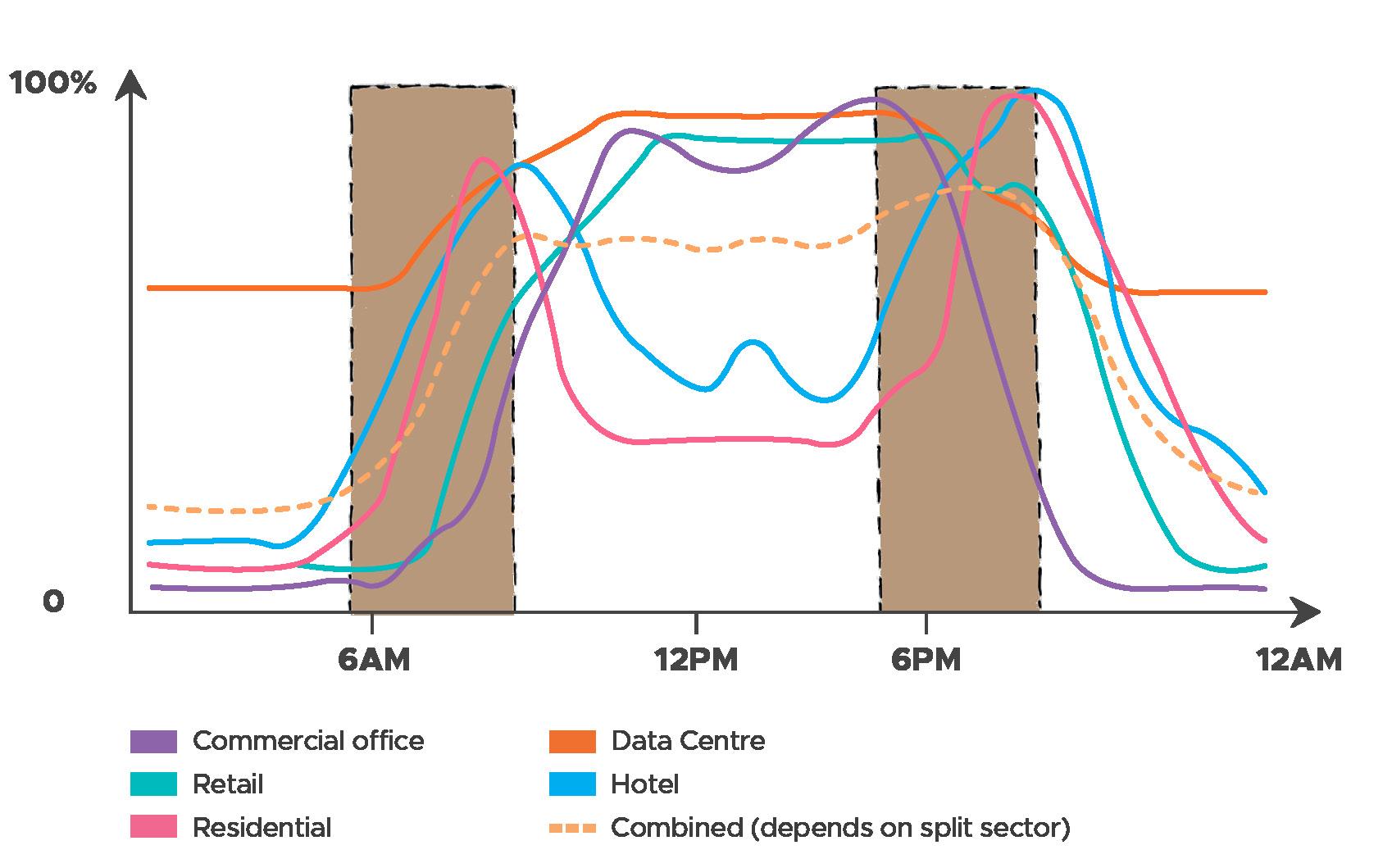
Shift happens: Load shifting & storage options
Fortunately, we can shift our buildings’ energy usage using two key methods:
• Load shifting (for loads in the late afternoon or early evening)
• Energy storage (for remaining loads including early morning).
Large scale batteries, pumped hydro and other grid-level technologies can be implemented at large public cost on the supply side to take care of this issue, However there’s things we can do on the demand side as well.
There are several levers we can pull and systems we can implement to shift the loads or store energy in our buildings – and many of them require little to no capital investment.
Matching load with demand helps reduce load on generators and on the network, which lowers investments needed to upgrade poles and wires.
The “HVAC battery” method
Using existing controls, an office space in summer between 3pm and 4pm can
be cooled down from 24°C to 20°C, and pumped full of outside air while its domestic hot water systems generate hot water for storage.
At 6pm, when the energy price spikes, the building can close off its outside air dampers, reduce its chiller loads and use the stored up hot water. This can potentially reduce the building’s base building load by more than 60% during a peak 15-minute energy spike and likely reduce carbon emissions by more than 20% over the course of a year.
This can happen now – and we can do even better with thermal storage and batteries.
Incentives are needed
While this illustrates the potential, there are also pitfalls. Retailers must be prepared to reward existing customers who can shift loads by batteries or by controls – and they currently don’t. Asset owners must be also cautious about signing up to long-term energy agreements today which may limit their ability to create new revenue streams in the future.
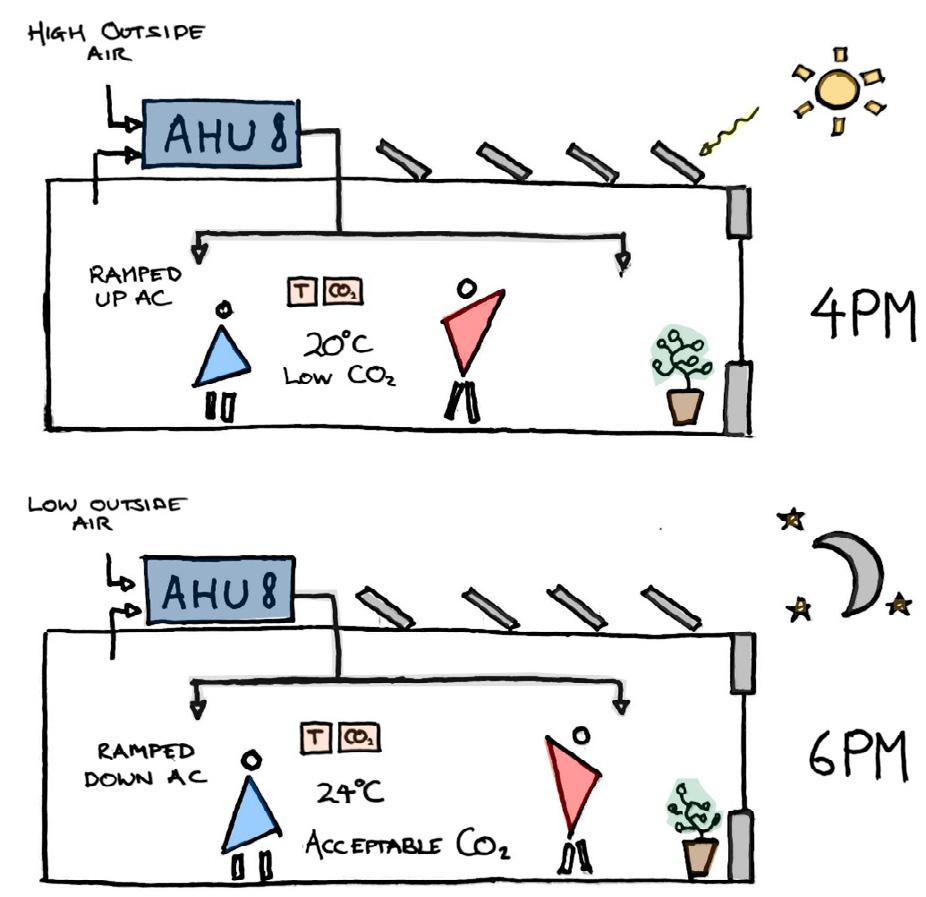
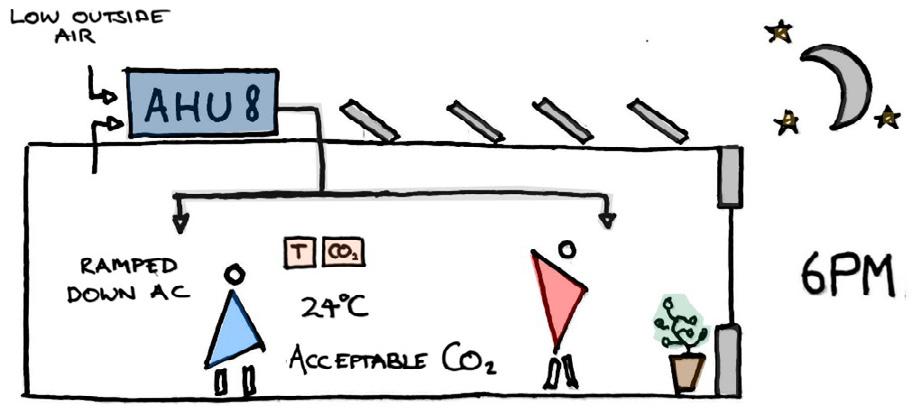
Load shifting & storage
Cheap and easy levers
(Low capital investment)
• Changing set-points
• Over-cooling
• Over-heating
• Over-outside air
• Domestic hot water timing
• Pool heating timing
• Smart appliances
• Demand-controlled EV chargers

With a little coordination...
(Medium capital investment)
• Building envelope improvement
• Equipment efficiency and control upgrades
• East-west PV arrays for earlier and later generation
• Load shedding
• Being clever (e.g. using fire tanks as thermal stores)
• Behavioural change of occupants or processes
• EV vehicle-to-grid (coming soon)
• Frequency Control Ancillary Services (FCAS) and demand response systems
More expensive or complex (High capital investment)
• Electrical batteries
• Ice or thermal storage
Connecting the dots: The Internet of Things (IoT)
ADP Consulting has performed audits and decarbonisation roadmaps on more than 100 buildings, and we are finding common control functionalities across asset owners and many sectors.
Our buildings are smarter than we think –particularly commercial buildings which have sophisticated metering, monitoring and control systems. Most notably, they have the following:
• Equipment and system level controls
• Switchboards and energy meters
• Temperature, pressure, flow, humidity and gas detection sensors
• Building management systems
• Analytics platforms.
Our systems already have the functionality, capacity and capability to shift loads. What we also need is engineering skill to implement battery and thermal storage solutions.

Equipment and system level controls
Examples: chillers, lifts, lighting, Variable Speed Drives (VSDs), pumps, fans, hot water units.
Functions:
• Stop/start
• Modulate
• Fault detection

Most building management systems (BMS) have control algorithms that already predict and respond to weather data. It’s not a stretch to make them responsive to predictive grid carbon intensity and energy price fluctuations.


Switchgear and metering Building management and automation systems Analytic platforms
Functions:
• Fault protection and isolation
• Automatic switches
• Demand response systems
• Meter data from incoming supplies and submeters
12 ADP Consulting Think… Megawatts & Megatrends
Functions:
• Direct control of equipment
• Reading sensors
• Detection of faults
• Programming sequences
• Remote access
Functions:
• Utility usage tracking
• Environmental reporting
• Fault detection
• Automated outputs
Climate-conscious energy consumption
ADP Consulting has helped clients including Dexus, Charter Hall, QIC, Growthpoint and Riverlee to electrify their buildings, boost their NABERS Energy ratings, reduce their energy consumption and save money.
With insights from real-world data, we have a deep understanding of the actual energy usage of different building systems.
Understanding energy splits allows us to predict the type of energy reductions we can make by shifting loads in buildings and what capacity of battery storage we require. The charts on the right show how climate influences energy consumption patterns. Heating is much more significant in cooler climates (Melbourne) and chillers are more important in warmer climates (Brisbane).
During peak times, load shifting can reduce a building’s peak energy by more than 25%. For 15

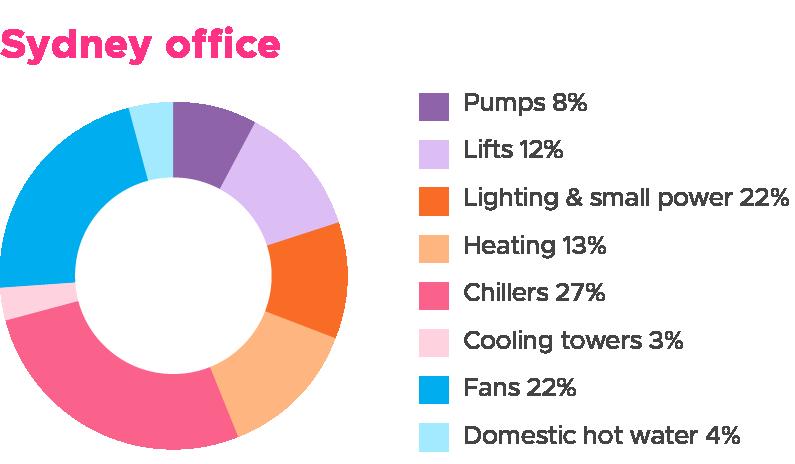
minute periods we could shift the building load by more than 60%, and this could be expanded with thermal and battery storage. This can translate in substantial savings.
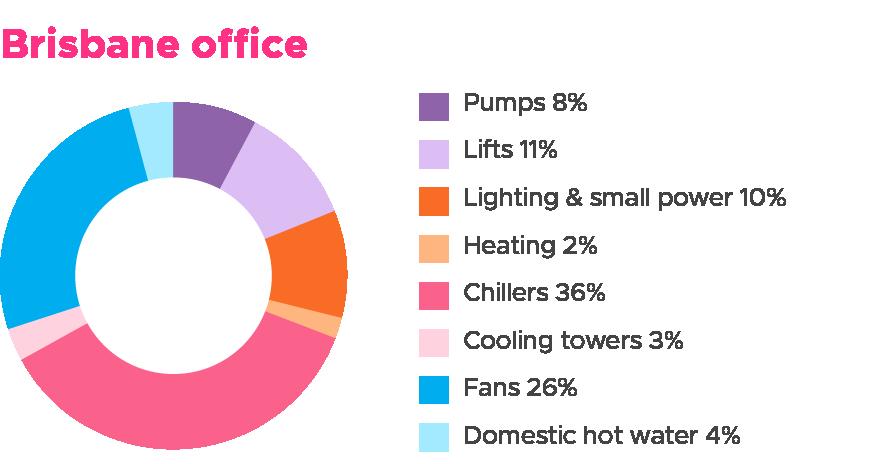


Energy intelligence with analytics platforms
Building analytics software has steadily evolved over the last decade and is now integral to building operations, monitoring and reporting.
Analytics platforms process data from energy meters, building management systems and weather offering real-time insights.
However, not all analytics systems are equal –variations in the quality of data, useability and interface are common. Gaining the support of facility management teams and on-site engineers is critical to success.
Typical features include:
• Monitoring, diagnosis and optimisation
• Fault detection, diagnosis and alarm notifications
• Displaying meter data (both utility and submeters) and tracking maximum demand
• Connecting and reading from BMS
• Reporting gas, electricity, water, NABERS Energy and indoor environment quality readings
• Monitoring tenancy meter usage via green leases
• Performing complex diagnostics, both AI and granular, to propose set-point changes, control strategies, or identify missing data and faulty sensors
• Integrating capital expenditure (CapEx) planning and condition assessments
• Checking performance against other buildings
• Providing recommendations for maintenance procedures (with ticket generation)
• Cross-checking existing control sequences with BMS functional description and existing plant operations
• Enabling digital twin capabilities.
Water-based cooling
Smart strategies can cut energy loads
Using outputs from the analytics on a Melbourne CBD commercial building project, ADP Consulting’s team could advise on maximum demand reduction strategies.
office building load profile

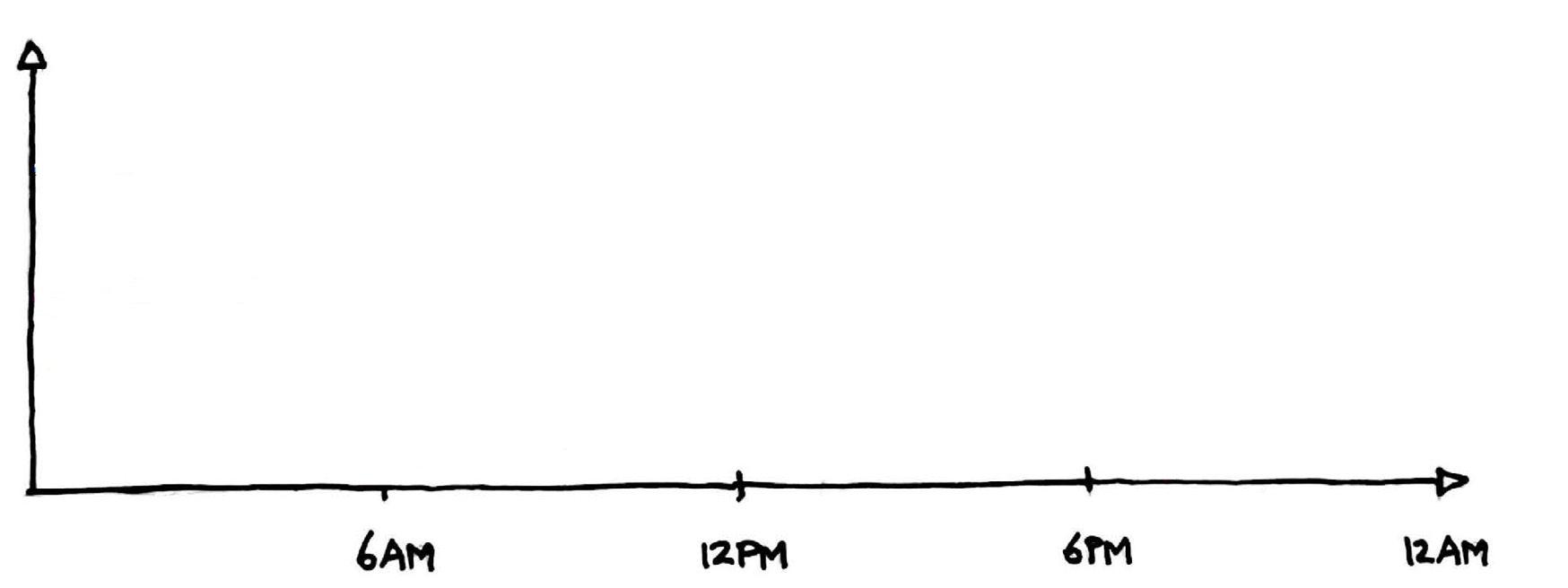
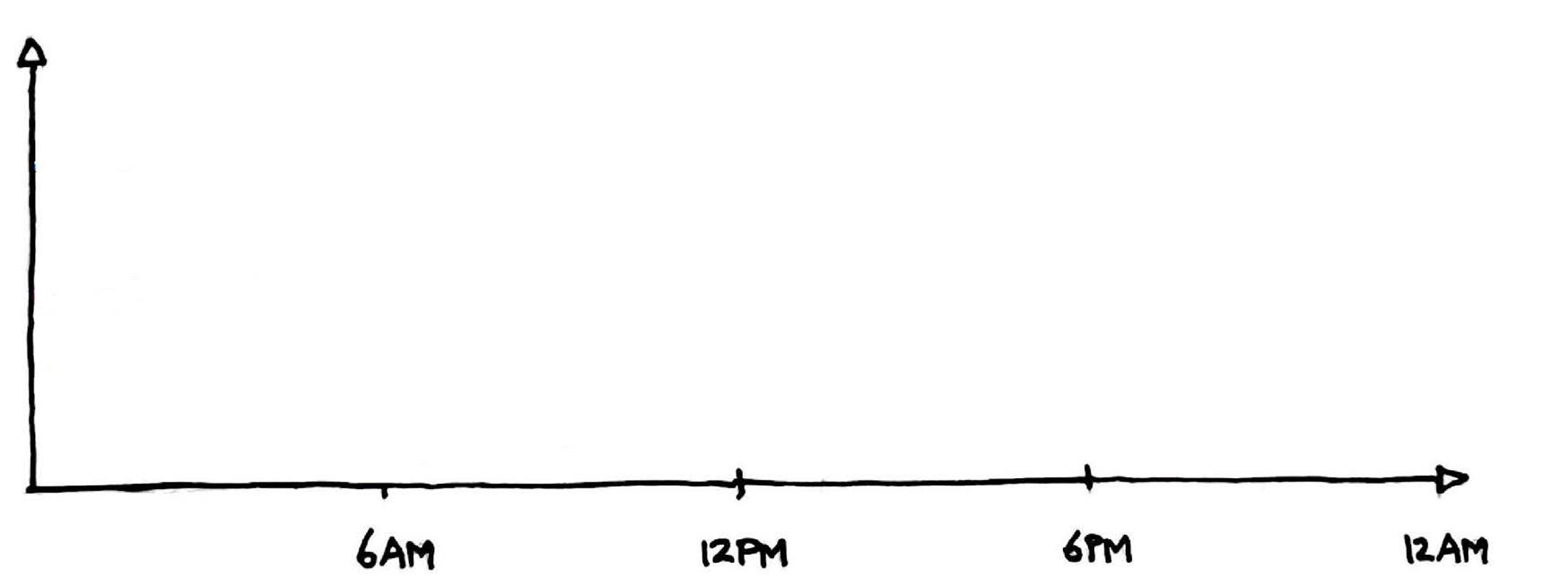

Precinct & campus connections
Applying the principles we have outlined on a precinct level can maximise the size and effectiveness of solar generation on site and avoid using grid energy during wholesale spikes.
If properly implemented, large industrial sites could potentially generate more than 75% of their energy on-site by optimising load shifting and incorporating storage solutions.
Forming a strategy
Early-stage design is crucial when planning a large site. Several key decisions will shape the final energy strategy, including:
• How will the site be titled?
• Will it operate under a land-lease model?
• Will the site have an embedded network?
• What building types will be present?
• What is the phasing plan, and will cash flow support large-scale infrastructure CapEx at an early stage?
• Will the streets be public?
• Is a central plant and site-wide infrastructure planned?
• What are the target buildings, and who are the intended tenants?
• What is the site’s maximum demand and energy profile?
• How much on-site energy generation is feasible?
• Who owns the building's roof space?
• Who buys and sells the power to whom?
• Are there any symbiotic relationships available? E.g. data centre waste heat going to a swimming pool.
The fast-track to grid stability
Once these factors are addressed, securing a Distribution Network Service Provider (DNSP) connection is the next step. DNSPs are responsible for managing the distribution of electricity from the high-voltage transmission network to homes and businesses, and maintaining the infrastructure, such as power lines and substations.
Now is also the time to explore microgrid solutions and new partnerships with utility companies and embedded network operators (which purchase electricity from a DNSP and then distribute it to tenants or residents in a localised electricity network like an apartment building or commercial office precinct).
Special cases: Data centres and industrial developments
Data centres and industrial facilities typically consume vast amounts of energy and managers of these buildings already adjust their processes in line with the wholesale energy market. For example, while data centres may have relatively constant energy needs for storage, they often schedule AI and computational tasks to coincide with lower energy prices. The growing use of liquid immersion cooling also presents
opportunities to reduce cooling loads when energy costs are high.
Demand response and FCAS systems
Frequency Control Ancillary Services (FCAS) and demand response services provide two key revenue streams for battery owners. These systems enable asset owners to generate income by quickly supplying power or stabilising the grid when the Australian Energy Market Operator (AEMO) determines it is necessary. However, FCAS participation is tightly regulated by AEMO, with stringent requirements that sites must meet.
Batteries are well suited to this role, because they can respond to grid needs in under one second – far faster than large power plants, which require more time to adjust their generation capacity.
Therefore, batteries are the fast-track to grid stability and extra revenue.
New energy ecosystems start here…
Warehouses and logistics
Large warehouse roofs allow for giant solar arrays. EV trucks used for logistics
HV embedded network / microgrid
DNSP connection and high voltage substation
Substation size reduced due to onsite batteries and generation. Early engagement with DNSP required
Battery array
Batteries can smooth fluctuating loads, reduce infrastructure costs, arbitrage the wholesale market and participate in FCAS
Energy network communications
Site-wide communications network and controls centre
Commercial and residential towers

Shift thermal loads and incorporate vehicle-to-grid systems
Thermal storage
Store generated cooling or heating energy for when it is needed
Residential Instal smart devices and EV chargers. HVAC and domestic hot water systems timed with solar operation
Shopping centres
Modulate HVAC, EV charging and cold store loads. Explore vehicle-to-grid possibilities
District heating
Site-wide low temperature heating network from data centres or industrial assets
Large energy users
Factories, data centres and other big energy users modulate operations with the grid. Consider hydrogen generation when excess solar is available


Charging ahead
Two megatrends will impact the future loads and load profiles in buildings: electrification and EV charging.
Electrification
By replacing gas-powered devices, such as heating systems, domestic hot water units and cooking appliances, with all-electric alternatives, buildings can reduce their direct emissions, especially if the electricity used comes from renewable sources such as wind, solar or hydro power. However, this presents challenges for the electricity grid, as these new power demands typically occur during periods when wholesale electricity prices are at their peak:
• Early morning heating
• Morning showers
• Evening cooking.
Winter loads are especially problematic as solar generation is lower and demand for heating and hot water in the morning increases. Addressing these loads requires targeted energy storage solutions.
Office winter demand profile after electrification
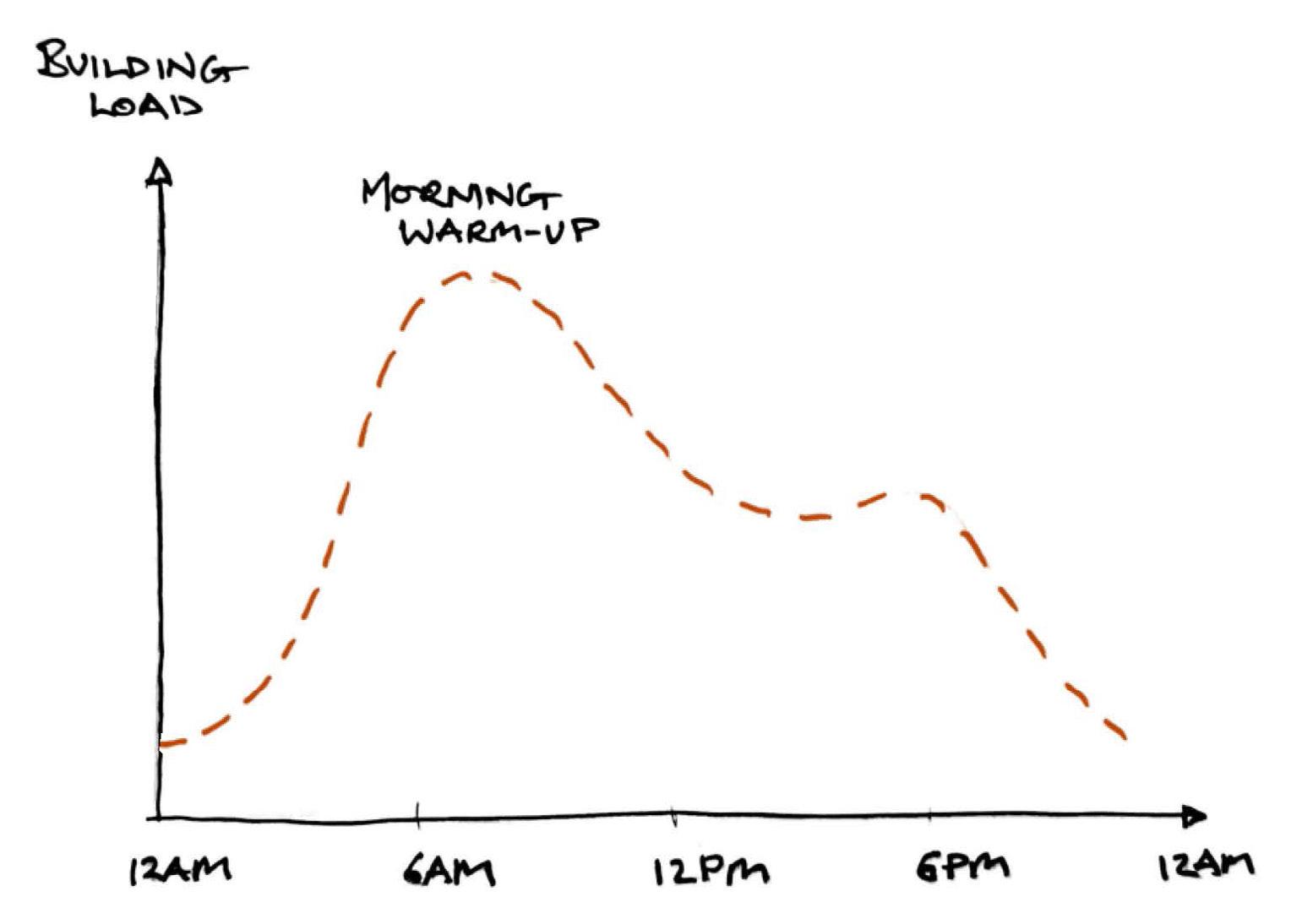
Curtailing our losses
EV chargers and V2G
As electric vehicle (EV) sales continue to rise, demand for charging infrastructure grows. Many EV chargers are already equipped with load management capabilities, which means they can be programmed to charge when electricity is cheaper. This avoids adding strain to a building’s systems, particularly when it is approaching maximum demand, reducing upfront CapEx costs.
What is particularly exciting is the potential of vehicle-to-grid (V2G) technology. EVs have large batteries that could be deployed when energy prices are high.
Commercial V2G systems are already being rolled out. Jetcharge, a leading EV charger installer, has projected that mass-market commercial V2G systems will be available in Australia by 2025, with widespread adoption expected by 2030.
V2G holds immense potential for addressing early morning energy demands, which typically require storage solutions. With more than 70kWh of storage capacity in most homes and many times this number in carparks, the total available storage could significantly transform the way our grid and buildings operate. However, there is one caveat: many vehicles being sold are not capable of bi-directional charging.
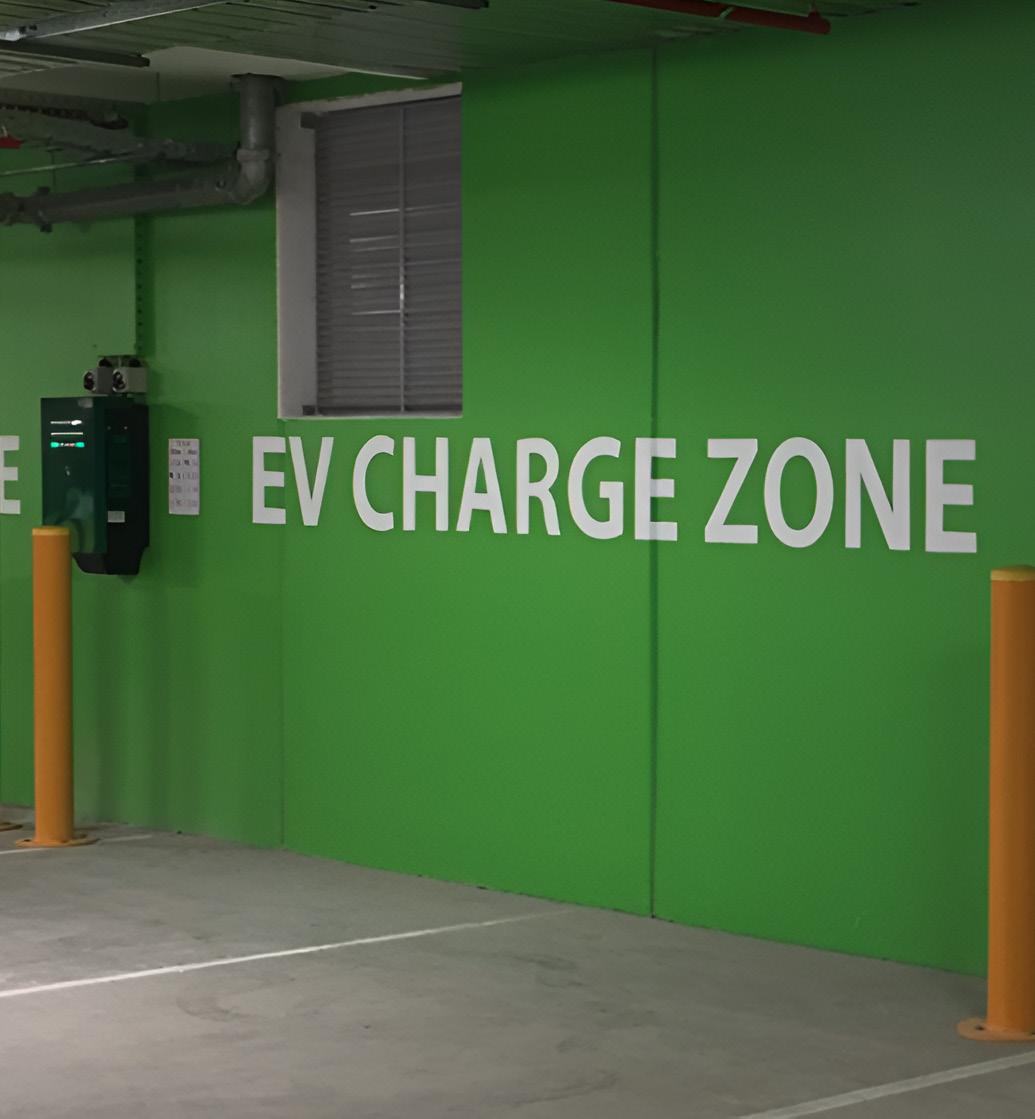
The changing market...
Regulations, reporting requirements and funding models are evolving, and a wide range of industry drivers are set to accelerate market transformation.
Driver Impact

Carbon reporting: From 1 January 2025, most large companies in Australia – those with annual revenues of more than $500 million – must disclose their scope 1 and 2 emissions, with scope 3 following in their second reporting year. This regulation will capture more companies over time, forcing more companies to consider their emissions profile and the steps they can take to reduce it through renewable energy.
CBD expansion: Proposed expansion to the Commercial Building Disclosure (CBD) program may see more asset classes require NABERS ratings to be disclosed at the time of sale or lease. This will allow more tenants and building owners to compare carbon emissions and make more informed decisions about investments and upgrades.
Green Star Buildings: The most rigorous generation of the Green Star rating system includes credits for grid resilience and minimum requirements for EV chargers. A current consultation paper from the GBCA proposes to offer further credits for grid interaction including minimum BMS requirements, 15 minute reporting of energy uses and the ability to ingest data from the energy network. Buildings must also have at least three of the following: active thermal storage, PV, passive thermal storage, batteries or V2G.

NCC 2022: The new version of the National Construction Code includes requirements for new carparks to have switchboards ready for EV charging facilities on each carpark level. This will help facilitate the uptake of EVs.








Funding and grants: National, state and local-level funding schemes incentivise building owners to upgrade their assets, and have the potential to enhance the viability of otherwise expensive battery systems or on-site energy generation.
New retail models: New progressive retailers are gaining traction in the market by offering contracts that provide both full and partial exposure to the wholesale market. This will allow building owners to reap the benefits of load shifting and energy storage.
Curtailing our losses
“Curtailment is a euphemism for wasted electricity. The more renewables in the grid, the more we are going to waste electricity unless we start thinking differently about the energy market.”
Craig Roussac, Co-founder and Chief Executive Officer, Buildings Alive
The Australian Government has set a clear 2030 target for 82% of our electricity to be generated by renewables. This is in line with our international obligations under the Paris Agreement.
But just as Australia's National Electricity Market (NEM) sets new records for renewable energy generated, it is also hitting new highs for renewable energy curtailment.
Solar farms are being switched off.
Curtailment is the intentional reduction of electricity generation from renewable sources, such as wind or solar, to maintain grid stability or manage supply and demand mismatches. Curtailment is frequently driven by economic factors of over-supply and under-demand causing energy prices to plummet below zero.
Building owners can play their part in the new energy market by investing in batteries to store excess energy for later use, and by adjusting their energy usage during peak generation time. But we also need to rethink energy market structures so building owners are rewarded for their efforts.
We need dynamic reporting of carbon emissions.
We also need to establish new reporting methods for carbon, based on the time of use. Both NABERS and the new mandatory carbon reporting regime consider carbon at a flat rate/kwh and ignore the time of use. Simplified metrics fail to reflect the true impact of energy usage on the grid. By implementing more nuanced reporting, we can better incentivise sustainable practices and achieve our climate goals.
A better future for all
“A true net zero building is not only electrified and powered by renewable energy – it also interacts with the grid. The resilience of our future assets will depend on their ability to adapt and respond to the ever-shifting energy landscape.”
Alex Sear, Director / Building Revitalisation Lead, ADP Consulting
The integration of energy storage and loadshifting technologies holds immense potential for increasing the adoption of renewable energy. These innovations promise substantial cost reductions for public electrical infrastructure and asset owners alike. Large precincts such as campuses, shopping centres and airports are already well-positioned to capitalise on these opportunities, leading the way toward a more sustainable energy future.
As we move forward, expanding these systems and encouraging more entities to participate in the grid will propel us towards a low-carbon future and create new value for property owners.
Our commercial buildings can benefit from tailored energy supply models that incorporate wholesale market participation, particularly as progressive energy retailers offer contracts with full or partial exposure to these markets. This will empower asset owners to effectively capitalise on the advantages of load shifting and energy storage.
Ultimately, these efforts will culminate in a cheaper, greener and more resilient electricity grid, benefitting both consumers and the broader energy system.
'Think' is a thought leadership series developed by ADP Consulting to ask and answer some of the big questions confronting the property and construction industry.
We bring together a team alive to the immense opportunities, as well as the obstacles ahead. Through thoughtful design, education and collaboration we are optimistic the AI revolution can be carefully managed through its inception, allowing us all to benefit from it in the long term.
Our experts

Author & illustrator
Alex Sear Director
ADP Consulting’s vision is to inspire a better world through influence and design.
Founded in 2011 in Australia, ADP Consulting is is a trusted sustainability-led multi-services engineering consultancy with more than 350 Thinkers, and a growing international footprint.
ADP Consulting has now joined forces with Ayesa, one of the world’s largest technology and engineering companies, in a move that facilitates new pathways and accelerates our growth.
We provide building services engineering, structures, sustainability, ICT, acoustics, audio visual, security, vertical transportation, specialist lighting and energy design to the property and construction industry.




Rebecca Patterson Director
Travis Beer Associate Director
Alex Beza Renewable energy engineer
David Woodman Associate Director




adpconsulting.com
/adp-consulting-pty-ltd
@adpconsultingptyltd
